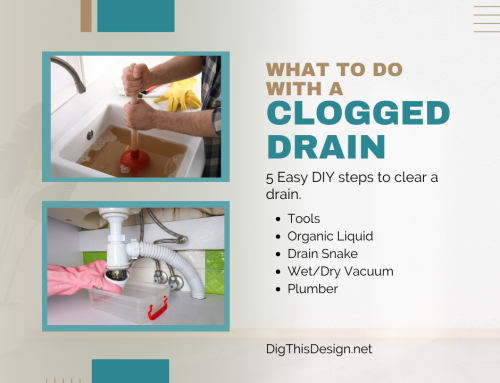Having several power tools on hand makes repairs or projects manageable. Like anything, power tools need repair and maintenance to ensure optimum performance and a longer lifespan. However, a time will come when you notice irregularities with your tools. Once you see changes in the performance or unusual signs, you might have to inspect or repair the item in question.
Keep in mind that working with a tool in bad repair puts you at risk for injury. Therefore, it’s crucial to pay attention to the condition of your power tools. In fact, you must be familiar with the signs that your power tools need repair for your safety and efficiency. If this interests you, we invite you to continue reading to learn more about how to detect the signs that your power tools need repair.
8 Ways To Know If Your Power Tools Need Repair or Replacement

1. The tool does not start.
If one of your power tools fails to start, it might be a sign of a severe electrical issue such as a short or a component malfunction.
2. Inspect the power cord.
When you have a bad power cord, it renders your tool powerless. Any tears, kinks, or cuts in the cords prevent the flow of electricity. Since water or heat are typically the culprits behind a tool’s inability to start, make sure to check the power switch to ensure there are no damages. It’s best to use a multimeter to test the voltage, the power that moves through the cord, the switch, and other parts of the device to determine if there’s damage to the wire. Checkout the best multimeter for testing your tools power cords.
3. Check or replace the carbon brushes.
The buildup of dirt inside a tool is another reason a device might not start. Therefore, checking the brushes and springs might solve the problem. Usually, wear and tear develop over time to the channels containing the brushes and springs. According to Top Deals Online, you should sand down carbon brushes carefully as opposed to cutting them, to avoid damaging them. Make sure to inspect these items regularly and replace them if necessary.
4. Poor efficiency in production.
As power tools start to age, it’s natural for their overall effectiveness to diminish. One of the first ways you’ll notice a deterioration of your power tools isn’t with the device itself but on its level of efficiency.
If your tools deteriorate, you might find them harder to use over time. Usually, the production level might diminish before the machine’s age is a major factor. If one of your power tools takes a long time to start or realign, this might indicate an immediate need for repair.
5. Difference or irregularities in sound.
Hearing strange noises while using your tools is another red flag for repair. If you start to notice unusual sounds, you must stop using the device until you can pinpoint the source of the noise.
Again, any repetitive screeching, creaking, or grinding sounds in your woodworking tools is an indication of damage and might require a repair job. If you continue to use the tools despite the unusual sounds, it might result in injuries, lost materials, or even an unsuccessful project.
6. Unusual foul odor.
If your tool is emitting a foul odor, it’s a clear sign that something’s wrong. Determining the root of the smell might vary depending on the tool’s type, age, and design.
In some cases, the odor could be a sign the tool is overheating. Most motors produce significant heat when in use. When you use a tool for long periods or push it beyond its limits, it overheats and generates a burning odor. For safety, switch off the device if you smell something burning and let the machine rest for up to 30 minutes before checking the issue.
7. Evident wear and tear.
One concrete indication that a tool needs repair is visible damage. Generally, wear and tear cause damage to your power tools due to repetitive use. Interestingly, the damage might develop in any component. However, it’s typically on the handles, blades, cords, and wires.
Damage also arises from constant exposure to the elements, not handling the tools properly, or natural aging over time. While damage looks different depending on the device, once you notice any of the following on your tools, it’s time for repair or replacement.
- Chipping or bending components.
- Dullness.
- Full breakage.
- Frayed power cords.
- Discoloration or rust formation.
- Smoke emission from the tool.
Make sure to unplug any tools with damage from the power source and place a label on the device so others know it’s not operable. If other family members also use the device, inform them immediately so they won’t use the tool until after repairs are in place. Remember, it’s not safe to operate a broken power tool; continuing to use it makes the issue worse.
8. Age of the tools.
When you use a tool continuously for an extended period of time, the product naturally erodes. Even devices you use for years eventually break if you don’t use them properly. The degradation of tools is a natural process that comes with its use. Although you can slow the deterioration, you cannot prevent it entirely. Again, that’s when power tools need repair or replacement.
If your power tools are old, it might be best to refresh and simply update them. If it’s in your budget, replacing old tools with newer models could boost production, efficiency, and convenience on any project.
In conclusion.
When you use power tools for years, you know that their lifespan varies depending on the degree of use and age. Even with regular maintenance, over time, products show signs of wear and tear while developing problems along the way. Tools stop working and may require inspections or repairs that take a long time. Once you notice this happening, it’s time to do an assessment of your machinery and schedule a repair job to restore them to good shape.
If you have any questions or suggestions, we always love to hear from you in the comments below. Also below are links to more interesting and useful articles about ALL things DESIGN for your home or business.
Other Posts You Might Enjoy:
4 Digital Tools for Modern Art Lovers
Mood Boards: Why Make Them and What Tools Should You Use?





